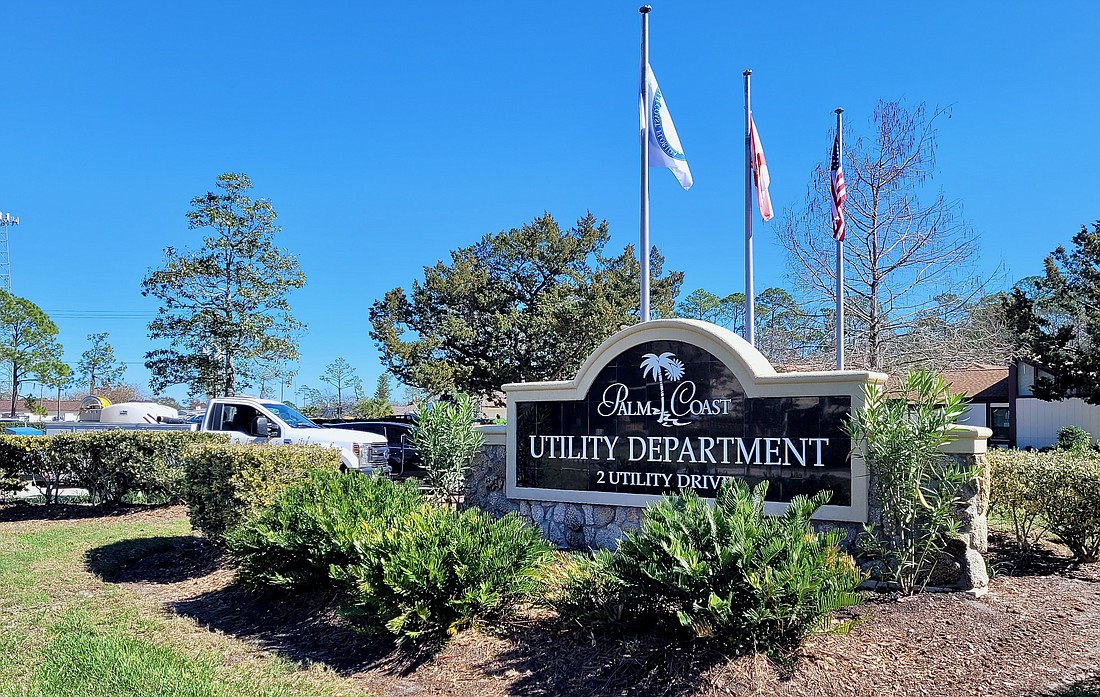- April 18, 2024
-
-
Loading

Loading

Palm Coast’s stormwater rates could go up $11 in the next fiscal year and continue increasing over the next several years in order to offset inflation costs.
The Palm Coast City Council heard the biannual stormwater report at its Feb. 14 City Council workshop as a part of budget strategic planning.
In the report, Carl Cote, Palm Coast director of stormwater and engineering, said that the stormwater department has seen such an increase in costs because of inflation that it has delayed capital projects.
“Our pipes are failing faster than we anticipated,” Cote said. “[And] our construction costs for projects are coming in way higher than we originally anticipated."
Staff contracted Raftelis Financial Consultants to conduct a rate study. Henry Thomas, vice president of Raftelis, said the previous adopted rate increases from the 2018 study were meant to enhance operations, accelerate capital projects and repairs and phase in new rates.
Residents currently pay $22.27 a month for stormwater rates and the rates have been steadily increasing since 2013. Cote said the recent rate increase of 8.2% for fiscal year 2022 didn’t cover what they thought it would.
“That just covered inflation,” he said. “That didn’t cover anything else in our budget.”
Cote said they had projected costs for five major capital projects, but only three were able to be completed because of the financial constraints. The two projects that were left out were drainage improvements for the K-section and replacing the P-1 Weir.
Our metal pipes are at the end of age already. We’re on borrowed time right now. — Carl Cote, Palm Coast director of stormwater and engineering
“Our metal pipes are at the end of age already,” he said. “We’re on borrowed time right now.”
Even after an unexpected $1.2 million more in revenue from fiscal year 2022, operation expenses and required transfers exceeded the planned amount by $1.9 million, Thomas said.
To address the cost deficits the stormwater engineering department is seeing, Thomas said they were proposing a three-part priority plan for the City Council to consider for the next fiscal year budget.
The three priorities are essentially a tiered description of necessary funding starting from the most basic needs in priority one. The funding for these would come from a mix of grants, loans and increasing revenues, like stormwater rates.
Priority one is to continue to fund the city’s maintenance needs, Thomas said, and it describes funding $55.6 million over five years for new equipment loans, personnel, maintenance and capital projects.
Priority two would additionally fund $40.7 million in major capital improvement projects; of that, the study assumes that $38.1 million would come from additional loans, Thomas said.
Priority three adds $3.5 million additional in new equipment loans and an additional $2 million for personnel per year up to fiscal year 2027 — bringing personnel costs for all three priorities to $5.1 million per year for the five years.
Raftelis recommended an $11.37 increase for the start of FY24 on Oct. 1, 2023, and gradually increase that over the next several years. By fiscal year 2027, if approved, residents would be paying $45.16 a month to pay for the three priorities, more than double the current amount.
The $11 and $45 increases would compromise as funding for all three priorities. The City Council would not be obligated to approve all three parts, but could instead just approve one or two.
The initial 2024 fiscal year rates would increase only $5.58 for the first two priorities. Priority one alone would go up to $34.73 by 2027's budget and priorities one and two up to $40.48.
Mayor David Alfin, who had thought the pipes were meant to last closer to 100 years instead of the average 50-year lifespan, was concerned about the city's "very old bones."
“The only thing that really scares me is the mention of infrastructure failure,” Alfin said.